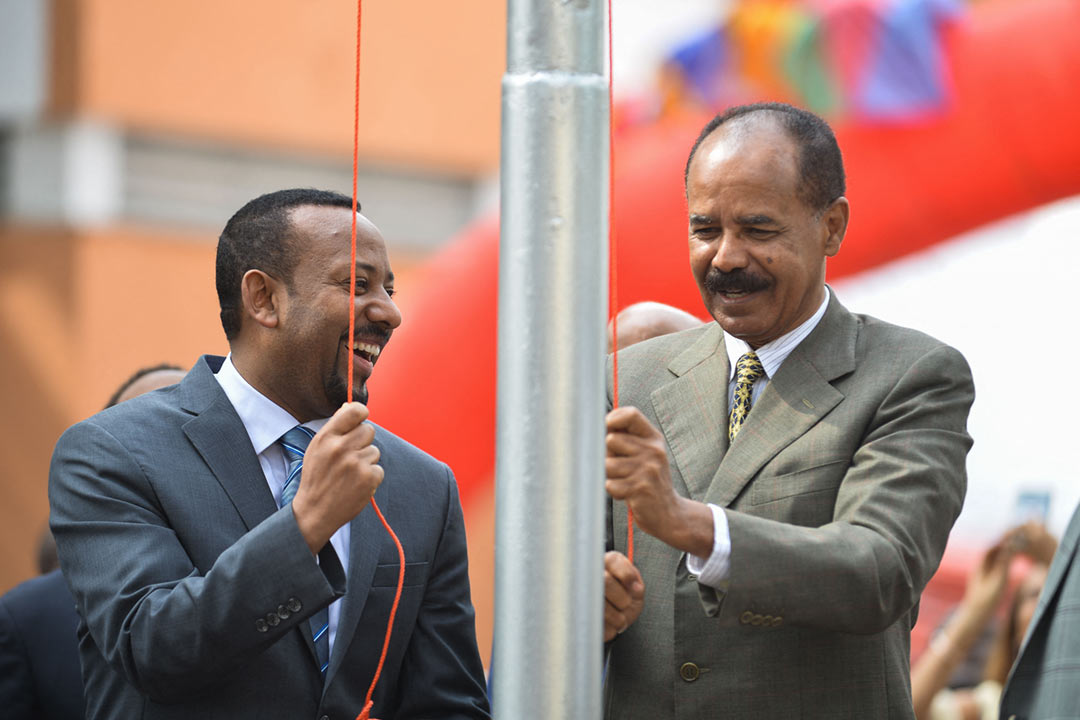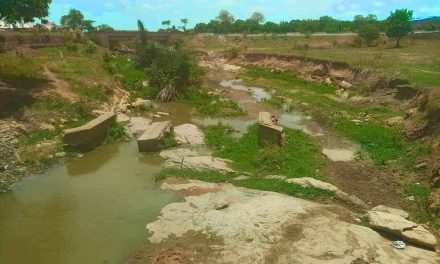The USA in the Horn of Africa
The 9/11 terrorist attack changed the United States security strategy globally. The event took place a decade after the end of the Cold War and before the US and its allies in the West had truly enjoyed the triumph of neoliberalism. Nevertheless, the attack bestowed on the US a new purpose as a global leader: in its view, world states were now either friends or foes, and in extreme cases, were listed as an axis of evil or good. This labelling forced several countries to choose on which side they should stand. Driven by wrath and neoliberalist adventure, the US designed a new security strategy, with creating anchor states as its core objective.
In line with this strategy, the US appointed Ethiopia to be an anchor state in the Horn of Africa, to act as a trusted ally whenever US interests in the region were at risk. It consulted with Ethiopia in bilateral venues even when the matter at hand was relevant to other regional states. This included issues that had serious direct implications for national security. It enabled Ethiopia to enjoy special treatment and allowed it to pursue its own interests and, in some cases, do harm to other states in the name of preserving the interests of the US.

Ethiopian Prime Minister Abiy Ahmed (L) and Eritrean President Isaias Afwerki (R) celebrate the reopening of the Embassy of Eritrea in Ethiopia in Addis Ababa on July 16, 2018. – Eritrea’s President Isaias Afwerki reopened his country’s embassy in Ethiopia on July 16, the latest in a series of dizzying peace moves after two decades of war between the neighbours. (Photo by MICHAEL TEWELDE / AFP)
After the US established its post-9/11 security strategy, the Tigray People’s Liberation Front (TPLF) regime in Ethiopia became the face of US foreign policy in the Horn of Africa. Choosing one country as an anchor might be an unreliable approach, but choosing Ethiopia under the TPLF regime made the choice more devastating because it was a leadership group that had lost the basic elements of nationalist character. Allowing this group to police the region meant unleashing untamed authority.
The popular uprising in Ethiopia, endless border disagreements between Eritrea and Ethiopia, and prolonged civil war in Somalia, were consequences of this policy.
When the war commenced in May 1998 between Eritrea and Ethiopia, the US, under the Clinton administration, tried to settle the conflict according to international custom: it sent a special envoy to mediate between the parties. In spite of this effort, the war continued for two years of carnage and destruction. Nevertheless, the US was proactive and became one of the guarantors of the agreement. However, following 9/11, the US changed its strategy, choosing Ethiopia to be an anchor state in the region. Using this privilege as leverage, Ethiopia began to alter its commitment to the final and binding agreements, and to the implementation of a border decision by an internationally recognised boundary commission.
The US’s new strategy had similar effects in Somalia: it worsened the state of war instead of improving it, and thus, the approach again proved to be largely futile. When the long-standing civil war in Somalia took a different shape under the Islamic courts in 2006, the US allowed Ethiopia to act in Somalia as Ethiopia saw fit. Historically, Ethiopia and Somalia had been enemies, so sending Ethiopia to Somalia was not a smart decision if the intention was to pacify the country. Inevitably, the outcome was that the suffering of the Somali people was doubled, and the regional security crisis was made worse. As a result, Somalia became a breeding ground for anti-foreign intervention resistance, which further increased the harm that Ethiopian and US policy caused in the region.
The US strategy gave the TPLF regime a free hand over Ethiopia’s people. Its government issued an Act that was similar to the Terrorist Act of the US, using it as a front to try and purge all internal dissent in the name of terrorism. Subsequently, leaders of opposition groups, journalists and activists were accused of terrorism and were sent to prison, where they faced torture. Some of them were forced into exile. This political strategy became an important instrument to reproduce despotism and authoritarianism in Ethiopia. In the meantime, development and democratisation processes became the casualties of the security crisis, largely forged by perceived risks of terrorism.
It is worth noting that TPLF has been the embodiment of the US’s foreign policy in the Horn of Africa for the past two decades. Such representation indirectly made the US strategy the main reason that the region’s peace and security was compromised and its development project hampered. In one way or another, the existence of the US in the region through the TPLF regime was found to be unfriendly to the basic interests of the people of the region as it provided substantial support to an unscrupulous political clique.
In attempting to save the TPLF regime in Ethiopia, the US inflicted much harm on the popular struggle in the country. When internal and external oppositions fought to overthrow the TPLF regime, the US did not only disregard their struggle, it became the regime’s ally in silencing them.
US policy in Ethiopia also went wrong with its approval of the so-called Anti-terrorism Act, which the TPLF adopted while practically designating anti-state social forces as terrorists and subjecting them to state punishment. Terrorism served the regime as a Trojan horse to win the support of the US in its move against internal dissent in Ethiopia and external competition against Eritrea and Somalia. The attack against the Somalia Islamic court movement in 2006, the UN sanctions on Eritrea in 2009, and the muting of the Ethiopian popular uprising were some of the outcomes of the irresponsible TPLF-initiated measures that the US allowed to take place.
Understandably, the US’s approval of Ethiopia’s Counter-terrorism Act presupposed that there was a real terrorist threat in the region. However, historical facts reveal that terrorism had never been a security threat in the Horn of Africa. These claims were a misconception because the US failed to clearly identify the difference between true terrorism that threatens US interests in other regions, and the form of resistance in the Horn of Africa. The latter is a condition that emerged in response to the lack of legitimate political platforms.
The real security threat in the region is an expansionist state in Ethiopia, as its desire for dominance over the region has resulted in recurrent crises for centuries. Ethiopia’s imperialist legacy has remained and still causes political and security threats in the region. When terrorism appeared as a global security agenda, it supplied the TPLF regime in Ethiopia with the perfect ulterior motive. And this became the source of despotism, authoritarianism and recurrent economic crises in the region. This approach, instead of solving the problems, has reproduced the crisis over and over again.
How should the US then act in the post-TPLF era in the Horn of Africa? The coming of Joe Biden as US president, and the removal of the TPLF as an important political force in the region, presents a golden opportunity for the US to reconcile with the region’s people by devising a more mutually beneficial policy. To this end, four points would assist the process:
First, the US has to recognise that terrorism has never been a fundamental threat to its national interests in the region. The issue in Somalia has been less to do with terrorism and should not be treated as a matter of terrorism. In fact, its legitimate grounds as a form of resistance against foreign intervention in a globalised world should be recognised. Actually, the fundamental threat to the US’s security interests has been the conflicts between Eritrea and Ethiopia, and between Somalia and Ethiopia since World War II, all related to Ethiopia’s expansionist ambitions. The US’s efforts must focus on settling these conflicts and encouraging a gradual state-building process that involves all actors indiscriminately.
Second, the US must avoid special treatment of member states in the region. Instead of treating them collectively and appointing just one anchor, it should recognise that the region accommodates more than one state actor and it must apply a bilateral approach. The US’s insensitive foreign policy in the region has damaged its relationship with Eritrea, for example. Once it decided to administer Eritrean affairs through Ethiopia and let Ethiopian interests outweigh those of Eritrea, the latter has painstakingly worked for the failure of the US in the region. Now, with the fall of the TPLF, the US’s most favoured political group in the region, Eritrea has remained a critical actor with which the US should deal carefully if its interests in the region are to be protected.
Third, the US must acknowledge change in Ethiopia. In 2018, a popular uprising overthrew the long-standing TPLF government. This change may have a trickle-down effect in regional security and development progress if it is well managed. As the change emerged through a gradual process, speeding up now may take the process to an unprecedented scale of disaster nationally and regionally. Hence, for the sake of Ethiopia and the region, the US should encourage the new government, as well as the people of Ethiopia to have faith in the change, and allow it to increase socio-economic transformation. If it sees this occasion as an opportunity, the US can redeem itself of its misdeeds in the last two decades; it must use this chance wisely if the future is to be prosperous.
Fourth, the US should look beyond the region’s security dynamics and support national and regional development initiatives. Despite interstate and intrastate ethnic conflicts that overshadow the potentials for development, initiatives like the Great Ethiopian Renaissance Dam will encourage public confidence in the future. How the US views this matter will always have a determining effect on how its interests are accommodated in the region.

NEW YORK, NEW YORK – MARCH 29: A small group of Tigray protesters gather outside of the United Nations (UN) on March 29, 2021 in New York City. The war-torn northern Ethiopian region has been the location for a conflict between pro-government and local fighters that has resulted in thousands of refugees spilling over the border into Sudan. Following months of denial, Prime Minister Abiy Ahmed of Ethiopia admitted this week that Eritrean troops had been fighting in Tigray. The protesters are calling for the UN to take action against the Ethiopian government. Spencer Platt/Getty Images/AFP (Photo by SPENCER PLATT / GETTY IMAGES NORTH AMERICA / Getty Images via AFP)
Supporting the construction of the dam does not imply embracing a new ally. Nor does it mean abandoning an old one. Owing to the magnitude of the matter, the US cannot afford silence or alignment to one side. This is because, firstly, from a geostrategic point of view, the Horn of Africa is a political and cultural border where the Arab and African worlds meet. Choosing sides does not only have implications for the relationship among regional states but also the relationship between Arab and African states. Secondly, the region is becoming increasingly attractive to newly emerging global powers. The US is no longer viewed as the sole global power because alternative powers are evolving with which regional states can choose to stand.
In summary, the four propositions call on the new US administration to abandon the security strategy it adopted in the region post 9/11. Instead, it should devise a new policy that acknowledges the presence of different state and non-state actors with vested national and regional interests. Such change in foreign policy will not only revive the popularity of the US in the region but also arm it with essential stratagems in the competition against other desperate global powers.
Temesgen Tesfamariam is a PhD senior researcher at the Research and Documentation Center in Asmara, Eritrea; a lecturer in the Department of History, College of Business and Social Science, Adi-Keih, Eritrea, and a 2020 fellow of the African Peacebuilding Network in the Social Science Research Council.












